With the top women following generations of men in refusing to be distracted by the level doubles discipline, mixed doubles has come to be ruled almost exclusively by specialists.
By Don Hearn. Photos: Badmintonphoto
Just 4 years ago, Zhao Yunlei became the first woman to score a second doubles double at the World Championships. In 2017, Chen Qingchen was perilously close to becoming the 7th player to accomplish a doubles double at the Worlds. Then last year, Zhang Nan was stopped in two semi-finals, prevented from doing in one championship what he had already done in different editions at both the Worlds and the Olympics.
In the 2019 edition, the closest anyone got to a doubles double was the two quarter-finals contested by Seo Seung Jae. But what is really going on is not a failure of individual doubles specialists, but rather a trend toward further specialization of already specialized doubles athletes.
The versatile old days
Of course, doubles being the exclusive domain of doubles specialists is itself a change that badminton went through at one point in its history. In 1976, Gillian Gilks became the tenth and last player to win a triple crown at the All England, winning women’s singles and doubles in addition to mixed doubles. Since then, Lene Køppen, Han Aiping, and Li Lingwei have all won world titles in both singles and doubles, though Li took hers a couple of years apart.
The last player to win top-tier open titles in all three disciplines in her career was Ra Kyung Min. 3 years after winning the 1994 Singapore Open, she took her first doubles double at the Hong Kong Open, and henceforward, she was an inveterate doubles specialist. Such versatility became increasingly rare by the turn of the millennium, and in the Superseries era, only one player – Sapsiree Taerattanachai – won Grand Prix Gold titles in all 3 events.
If Ra and Taerattanachai went from 3 to two events, many of their contemporaries were content to focus on doubles but still a large proportion of these excelled in both. This was particularly true with the women, with names like Lee Hyo Jung, Kamilla Rytter Juhl, Christinna Pedersen, Gao Ling, Zhang Yawen, Zhao Yunlei, and Ma Jin springing to mind.
In this millennium, it is harder to come up with names of men who have played both singles and doubles past junior days, apart from Vladimir Ivanov. But some men have managed to find success in both doubles disciplines. Kim Dong Moon, Jens Eriksen, Zhang Nan, Lee Yong Dae, Chen Hung Ling, and Ko Sung Hyun are just a few from that category in the recent past.
The one-track men
Of course, just as players might start out as juniors playing all three badminton events, then quickly choose a focus as they enter their twenties, doubles players have tended to concentrate on either mixed or level doubles, or at the very least they find their best results come in one discipline or the other, whether that is a function of their own talents or of the quality of partners they happen to collaborate with.
Still, prior to the Superseries era, the actual mixed specialists tended to be mostly men. The most successful mixed doubles women in the 10 pre-Superseries years were just as well known for women’s doubles. Ra Kyung Min, Gao Ling, Ge Fei, Joanne Goode – they all had top titles in both events. At the same time, we started to get players like Liu Yong, Zhang Jun, Chen Qiqiu, Michael Søgaard – and later Nova Widianto and Nathan Robertson – who simply didn’t compete in men’s doubles or for whom the vast majority of their results were in mixed.
Of course, even then there were the odd specialists among the women. Tri Kusharyanto was known far more for his mixed prowess than his level doubles, but then so was his partner Minarti Timur. Their successors followed a similar pattern. Nova Widianto was completely focussed on mixed doubles and by the end of their partnership in 2004, so was Vita Marissa. When Widianto switched to playing with Lilyana Natsir in the fall of 2004, Natsir herself left women’s doubles almost completely by the wayside.
By the time we got into the Superseries era, we had Widianto joined by Thomas Laybourn, Joachim Fischer Nielsen, Tontowi Ahmad, and Zheng Bo in focussing exclusively on mixed, and others like Sudket Prapakamol, Nathan Robertson, Diju Valiyaveetil, and Xie Zhongbo, whose good results almost invariably came from mixed, even as most of these men’s partners were still making an impact in women’s doubles.
Some of the mixed specialists became so later in their careers, either because that is where they found the winning combination or simply because they parted ways with a long-time level doubles partner, due to retirement, injury, or a pairing shuffle. Both men such as Sudket Prapakamol and Robert Mateusiak and women such as Chau Hoi Wah and Reiko Shiota have taken this road to specialization.
Make it a doubles double
The gender gap used to be most evident in the roll of honours for the accomplishment known as the doubles double. This refers to one player taking both the mixed and level doubles titles at the same tournament. In the Superseries era, there was no contest. Female mixed players accounted for a total of 51 doubles doubles at the Grand Prix level or above, while only 18 times was there a man stepping onto the top of the podium twice on the same weekend.
Furthermore, only one of those 18 saw a man winning a doubles double at a Superseries event, while over the same time period, from 2007 through 2017, a woman scored a doubles double at a Superseries event 12 times, plus two World Championships and one Olympic Games. True, these last three very impressive results – as well as 3 of the Superseries doubles doubles – were chalked up by the great Zhao Yunlei, but the difference is clear even if you exclude Zhao as an outlier.
And then it all changed…
Since the BWF World Tour began, the numbers tell a very different story. There has not been a single female player who has won two titles in the same week at any tournament at Super 100 level or above. There has still been a little bit of versatility among men, but the 5 doubles doubles in 2018 and 2019 have mostly come from England’s Marcus Ellis, who did it 3 times at Super 100 events and once at the European Games. The sole doubles double at a Super 300 belongs to Wang Chi Lin, who took two titles in New Zealand in 2018.
While increased competitiveness and a levelling of the playing field might ordinarily explain why we less often see one player title twice in one day, given the dominance of mixed doubles by China in the past two years, this doesn’t seem convincing. In any case, a simpler explanation has arisen. Obviously, you can’t win if you don’t play and that’s what is happening at the top level of mixed doubles.
The tables below compare the mixed doubles top 20 as it stood before the 2019 World Championships with the standings at the qualification deadline for the Rio and London Olympic Games. Using August numbers for 2019 might be an unfair comparison, given that tournament counts tend to go up in all disciplines during the actual Olympic qualification period; however, most of the top mixed players have actually wound down their level doubles partnerships and are unlikely to start up new ones between now and next May.
no images were found
In each table, the two centre columns show the number of tournaments played in level doubles in the previous 12 months, while the player’s current level doubles ranking is shown in the outside columns.
Clearly, the averages shown below the tables point in one direction. The sharpest decrease is in the women in the mixed doubles top 15. They played on average 12.9 tournaments in the year preceding the London qualification deadline and today’s top 15 have played on average less than one third of that.
The decrease in men’s doubles activity is less pronounced. The average number of tournaments started out lower than for mixed players playing women’s doubles but the average has decreased only slightly since 2012. This is in keeping with the notion of male mixed specialists being a longer tradition, as mentioned earlier.
Of course, many all-round players begin to focus on either singles or doubles at a certain point in their career, so it is no surprise that the same thing happens in doubles itself. There are always players who virtually never play mixed – Mohammad Ahsan, Fu Haifeng, Jia Yifan, Ayaka Takahashi to name a few – and others who start playing both doubles disciplines and drop one or the other.
But two aspects of this more recent trend among the women stand out. One is that several women have switched to specializing in mixed doubles both at a relatively young age and after achieving quite high heights. Huang Yaqiong, Huang Dongping, and Tse Ying Suet have all been ranked in the top 10 in women’s doubles and Chae Yoo Jung has been in the top 15. All 4 women have won at least a Grand Prix Gold title and have been in a major final as recently as 2017 or since.
The other thing to note is that China and Korea do not have a tradition of fielding female mixed doubles specialists. Eom Hye Won and Kim Ha Na continued to compete in women’s doubles up until the Rio Olympics. Bao Yixin and Ma Jin didn’t stop playing women’s doubles until within a year of their post-Rio retirement.
Japan’s Arisa Higashino is a combination of the two trends. While it is true that Japan has had female mixed specialists before, Reiko Shiota and Ayane Kurihara were both veterans when they switched to just playing mixed. Higashino, in contrast, has only played women’s doubles in 8 tournaments since leaving her teen years.
The 23-year-old Japanese shuttler’s career path toward mixed is more reminiscent of the Indonesian model, where Oktavianti, Widjaja, and now Kandow have all followed in Liliyana Natsir’s footsteps, dedicating themselves to mixed doubles by the age of 19 or 20. Malaysia’s Shevon Jemie Lai and Lai Pei Jing were also early converts to mixed doubles but Malaysia seems to have been following the Indonesian paradigm for a longer time.
The sign of things to come?
So is this a permanent paradigm shift? It may be too early to tell. In addition to players themselves giving up on level doubles, it is possible that the specialists themselves are simply out-performing the more versatile players and either crowding them out of the mixed doubles top 20 or convincing them to give up and focus on their other event. Indeed, the two teams who have never really had top mixed players who gave up on men’s doubles – Korea and Chinese Taipei – have struggled to keep up with the rest of the field.
It’s also true that Du Yue, the only Chinese player who is still near the top in both doubles disciplines, has dropped out of the top ten in mixed. Her partner Li Yinhui had done that already and is now strictly playing women’s doubles. Similarly, Zhang Nan made a concerted effort in mixed after Rio, but his heyday in the discipline was clearly much earlier in his career and he has ended up focussing on men’s doubles.
Several commentators have pointed to the ability of some of the women in the mixed top ranks to take control of the backcourt and allow their male partners to impose at the net. By far the best examples of that are the top four pairs in the world. Arguably the best of the four, Sapsiree Taerattanachai, also happens to be the only one still active in women’s doubles. The Thai also had a mishap at the 2017 SEA Games, when she was injured in the women’s doubles final after having already won the mixed. But for now, she is on track to continue her partnership with Puttita Supajirakul as well.
Still, 14 of the top 20 mixed pairs have women who specialize in the discipline, playing little or no women’s doubles and only a few of those are really considered so dangerous from the back that the pairs can play something resembling level doubles. The rest are more traditional mixed doubles specialists and if they are looking to role models like Liliyana Natsir rather than women’s doubles aces like Zhao Yunlei, Gao Ling, or Ra Kyung Min, it would be very difficult to fault them for that.
As for the men, the writing has been on the wall for some time now and only a few players or coaches are reluctant to read it. Only 4 top ten players are still persisting with men’s doubles partnerships and Dechapol Puavaranukroh, hasn’t played in his in 4 months. All of Korea’s men’s doubles players are repeatedly entered in mixed pairings – and frequently withdrawn – but even 32-year-old Ko Sung Hyun has made a comeback in both doubles disciplines and will soon be a regular feature in both at the top-level events in the BWF World Tour.
Conclusion
Trend or no trend, the question at hand for so many of the world’s top mixed doubles players is how to contend with current world #1 Zheng Siwei and Huang Yaqiong. After two consecutive World titles, two straight All Englands, and Asian Games gold, not to mention their growing stack of other medals, most opponents are struggling to keep them on court for more than 40 minutes, let alone beat them.
Maybe joining the trend to drop the other event has played a part in their rise, maybe not. Regardless, their challengers are apt to try whatever it takes to beat them. More players opting to specialize in mixed might be an increasingly common first step. But on the other hand, their current dominance could even give rise to some more developments in this exciting discipline.
![All mixing, no matching: The specialization of doubles specialists With the top women following generations of men in refusing to be distracted by the level doubles discipline, mixed doubles has come to be ruled almost exclusively by specialists. By […]](http://www.badzine.net/wp-content/uploads/ngg_featured/20190525_1146_SudirmanCup2019_BPMP8793_rotator.jpg)
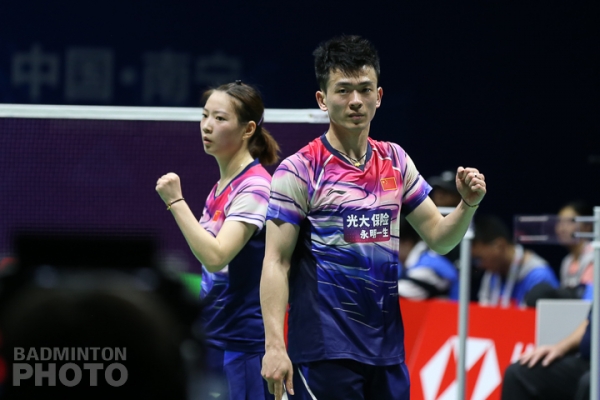
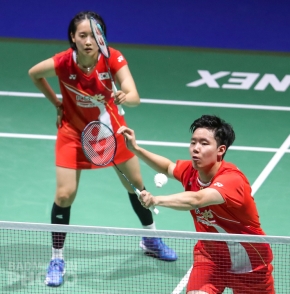
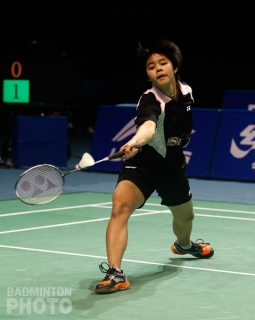
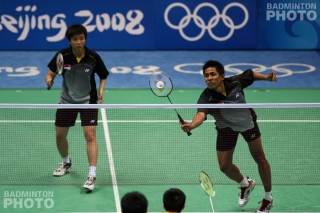
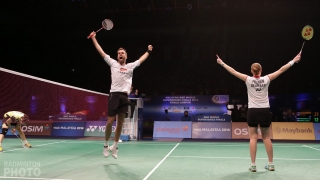
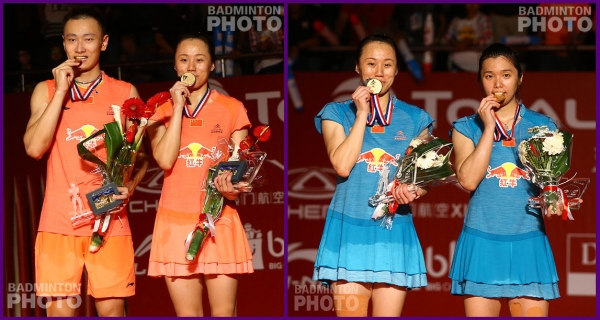
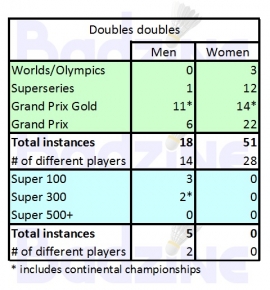
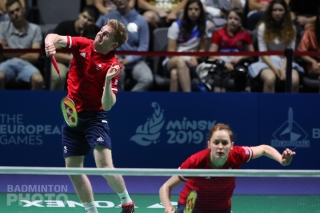
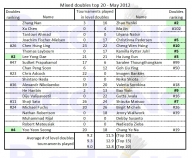
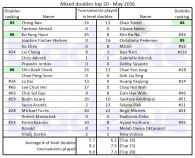
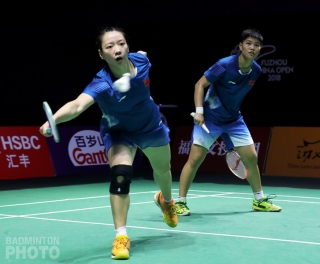
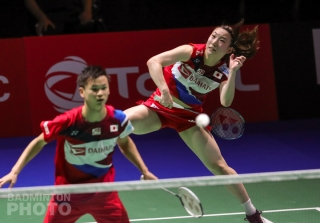
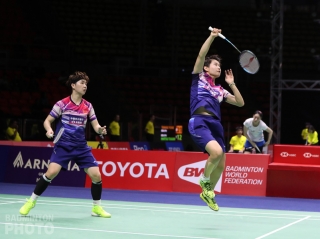
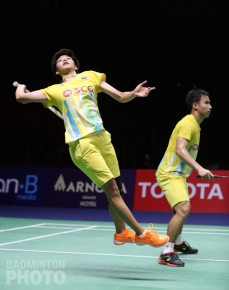
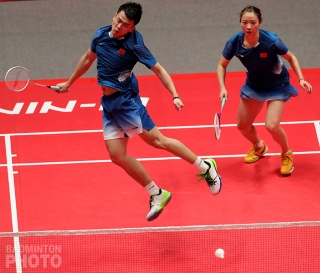


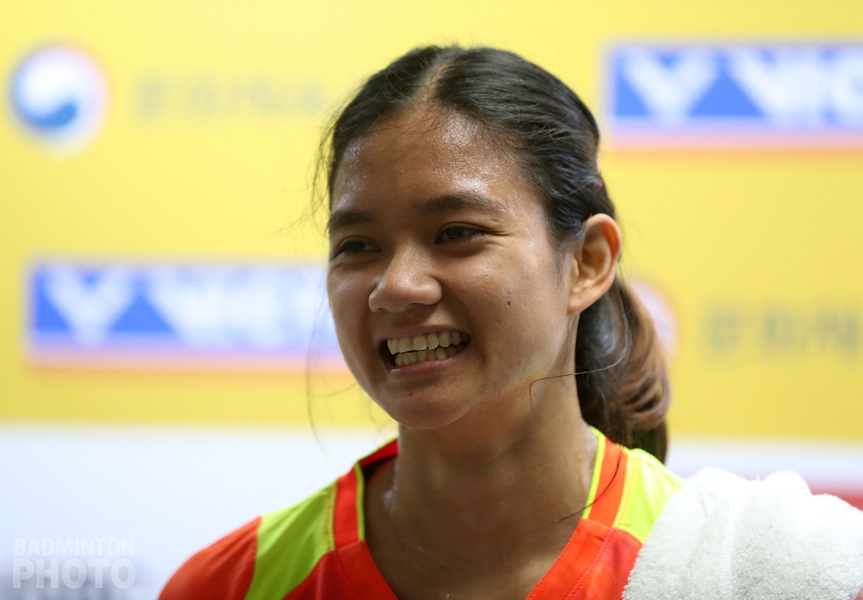


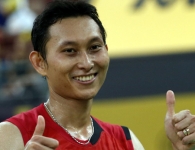
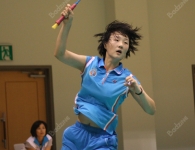
Leave a Reply